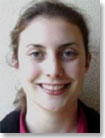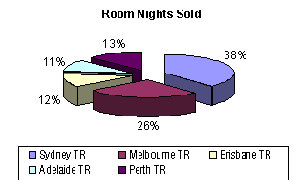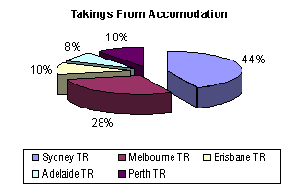Australia Capital City Round-Up
By Sophie Mougel, April 8, 2004

The Australian tourism industry had a relatively difficult start to 2003 due to the commencement of hostilities in Iraq and the outbreak of SARS in Asia; both of which put pressure on 5-star hotels, especially in the Sydney market. However, demand levels promptly recovered in the September quarter 2003 and the year-end results released by the Australian Tourism Commission substantiated the claims by hoteliers of strong increases in international arrivals in the last three months of 2003, mainly as a result of the Rugby World Cup being held in Sydney.Our analysis covers the performance of 67 5-star hotels and serviced apartments in the five major Australian city markets, as published by the Australian Bureau of Statistics (ABS). The results highlight that room nights available increased throughout Australia by 6% between the 12 months to September 2002 and the corresponding period to September 2003. At the same time, overall demand remained extremely buoyant with the number of room nights occupied increasing two and half times faster than supply levels resulting in Australia-wide average occupancies reaching nearly 74%. In contrast to the difficulties reported by 5-star hotels in most Asian countries, being constrained by heavily discounted room rates in order to attract demand, the upmarket accommodation sector in Australia recorded a surge in both revenue takings (12.6%) and RevPAR (6.3%).
The following two diagrams illustrate the relative size of the Sydney, Melbourne, Brisbane, Adelaide and Perth markets in terms of room nights sold and takings from accommodation for the 12 months to September 2003. Noteworthy, the graphs illustrate that accommodation takings in Sydney are proportionately higher than Sydney’s share of total room nights sold, emphasising the premium Sydney achieves in terms of average room rates. Conversely, Perth and Adelaide remain Australia’s lowest markets in terms of average room rates achieved in the 5-star category of accommodation properties.
Relative Share in Room Nights Sold and Accommodation Takings in Sydney, Melbourne, Brisbane, Adelaide and Perth - October 2002 - September 2003


ADVERTISEMENT
Sydney
Sydney was comparatively more affected by turbulences in worldwide tourism markets than other cities, since it welcomes more international visitors than any other market in Australia. Overall, Sydney recorded the greatest reduction in average room rates (4.8%) relative to the other capital city markets in the 12 months to September 2003 compared to the same period in 2002, but still managed to increase RevPAR by 4.3% due to strong overall increases in captured demand.
Melbourne
The supply of 5-star properties in Melbourne remained static between the 12 months ending September 2002 and 2003, whilst in the same period 10% more room nights were captured in upmarket establishments. Noteworthy, and contrary to most observers’ opinions, Melbourne was Australia’s leading performer in terms of RevPAR achieved (a 12.4% increase), although operators only reported a minor increase in average room rate.
Brisbane
Brisbane was undoubtedly the strongest overall market in 2003. A reported increase of 383 5-star rooms in the March quarter 2003 was balanced by the city’s recorded increase in demand to finish the 12 months to September 2003 with an occupancy rate of 76.6%. The improvement in the 5-star market on the back of growing demand led to an increase in both average room rate (2.5%) and RevPAR (12%).
Adelaide
2003 was a challenging year for Adelaide as the reported number of available rooms increased by 433. Despite solid growth in demand for the first three quarters of 2003, the impact of a significant imbalance between supply and demand was eventually responsible for a decrease in average room rates as operators resorted to discounting rates in an attempt to hold on to market share.
Perth
Perth registered moderate growth in all areas of performance in the lead up to the opening of Australia’s newest Convention and Exhibition Centre in August 2004. In anticipation of the impending demand of conference delegates, a new 5-star serviced apartment opened during 2003. Demand growth outpaced reported increases in supply for the first three quarters of 2003, which lifted occupancy by five points to almost 71% and average room rates by 3.2% to $130.65.
Outlook
The outlook for the five city markets as well as the overall Australian hotel industry remains positive for 2004, with international visitor nights expected to increase by 5.9%, according to the Tourism Forecasting Council. With no 5-star projects expected to add to supply in the near future in any of Australia’s capital cities, occupancy levels are anticipated to strengthen, giving operators the occasion to build both average rate and RevPAR in 2004 and 2005.
——-

